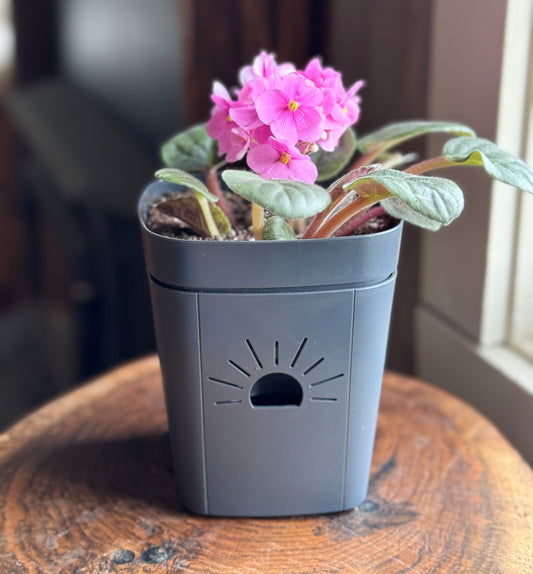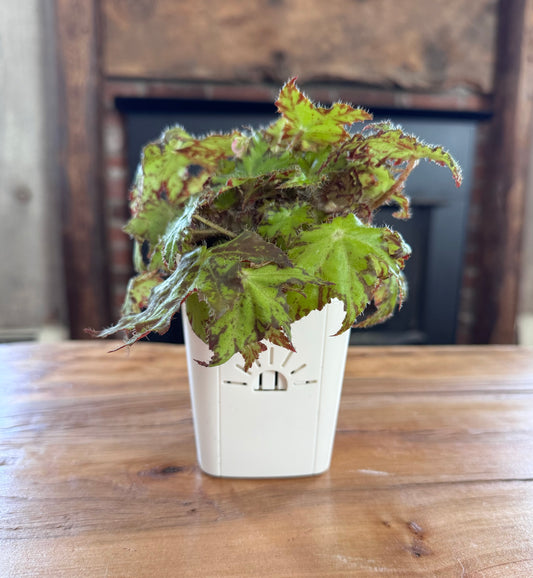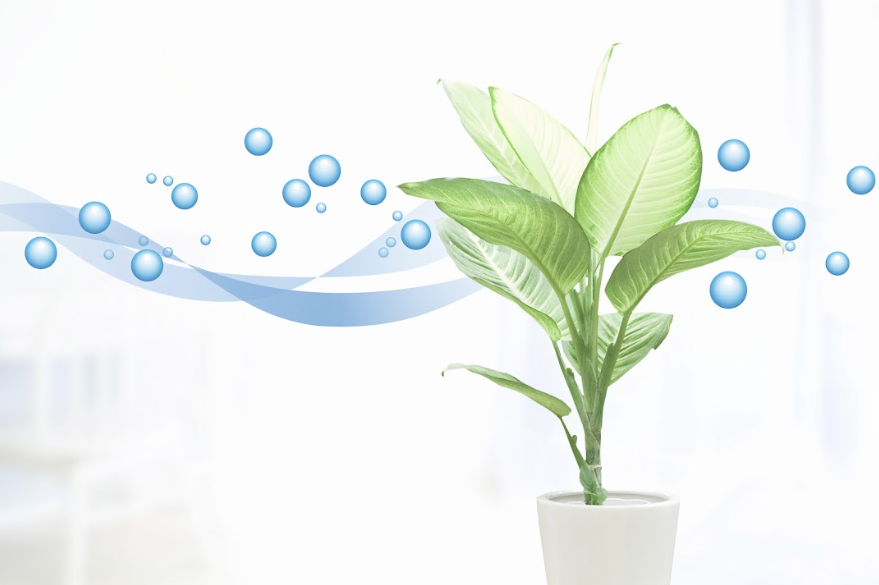Learn how to care for Chlorophytum.
Chlorophytum is a genus of evergreen plants that are native to warmer climates. They are known for their grass-like appearance and colorful flowers, making them a popular choice for houseplants. The spider plant is particularly easy to look after, needing minimal care and looking great in a hanging basket. It’s also simple to propagate. More plants are created from the parent plant automatically. In this guide, we will cover the basics of spider plant care, the common varieties available, and any issues you may encounter while growing them.
Origins
The common names for Chlorophytum are spider plant, airplane plant, spider ivy, and ribbon plant. There are 200 species of Chlorophytums in the genus, and they all belong to the asparagus family. The most common variety used as a houseplant is Chlorophytum comosum. The variegated form is especially popular.
They are native to tropical and subtropical Africa. It is an adaptable plant that has become naturalized in other warm areas of the world, such as Australia and Asia.
Light Requirements
Spider plants are quite versatile when it comes to lighting conditions and can survive in most places, except for spots that are exceptionally bright or receive direct sunlight. It is best to keep them in an area with indirect lighting or light shade or even in an artificial lighting environment. To get the most out of your spider plant and encourage offspring, give them access to 12 hours of bright, indirect light each day. For best results, place the plant 4 to 6 feet away from a south-facing window.
Genus Summary
| GENUS | Chlorophytum |
| COMMON NAMES | Spider plant, ribbon plant, spider ivy. |
| LIGHT | Bright, indirect |
| WATER SCHEDULE | 21 days |
| WATER REQUIREMENTS | Keep the soil evenly moist but not soggy. |
| HUMIDITY | Medium 40-60 percent humidity |
| TEMPERATURE | Above 60°F |
| FEEDING | 1x month |
| TOXICITY | Non-toxic. It is a mild psychoactive for felines. |
| PESTS | Spider mites, whiteflies |
| DISEASES | Root rot |
| POT | Highly aerated to avoid root rot |
| SOIL | Loamy, well-draining, pH of 6-6.5 |
| FERTILIZER | Half strength every two weeks in growing season |
| PROPAGATION | Self-propagating. Grows offsets/plantlets |
| PRUNING | Only to remove brown leaves & cut off offsets |
| SIZE | 8” to 24” |
Water Requirements
If using a Naked Root Planter, you can follow a 21-day watering schedule. Fill the reservoir and allow the plant to have a healthy drink. If you have highly chlorinated water, use distilled water for these plants to avoid leaf burn.
In the winter, allow the soil to dry out between waterings. When watering, do it in the morning on the soil surface and not on the leaves. It’s best to use warm, or room temperature water rather than cold water as this can damage the roots. If using a conventional planter, put it in a sink and let the water soak into the soil through the drainage holes of its pot, then let it drain before hanging it up again.
Humidity
Spider plants prefer a humidity range of 40-60%. During the winter, the humidity in most homes is too low for spider plants to be healthy. To keep them hydrated, regularly mist them with distilled water. Additionally, bring them into the bathroom while showering to increase the humidity.
Temperature
Maintain a temperature of at least 60°F and prevent gusts of wind from hitting the plant. Though they are able to handle a chill down to 35°F, below this point, they will enter a dormant state, and their growth will slow. If you live outside of the hardiness zones 9 to 11, it is best to keep the plant indoors, especially during winter.
Toxicity
Chlorophytum is non-toxic to humans and animals, with one exception.
If you have cats living in your home, it is important to keep in mind that spider plants can have a mild psychoactive effect on them, so it is best to hang them up out of their reach. Although these plants are non-toxic, there is no current research available on the long-term effect on felines.
Pests and Diseases
Chlorophytum is very resilient and troubled by few pests or diseases. Occasionally there may be a spider mite issue if the indoor air is too dry. Whiteflies have been known to show up and eat the tips of the leaves and turn them brown.
Root rot can be a serious issue for spider plants, showing up as small brown marks on the leaves. To prevent it, make sure your watering practices are correct and that the soil is well-draining. Never propagate any plantlets from the mother plant that have root rot, as this will only spread the fungal disease.
Pot
Chlorphytum enjoys being pot-bound, so pick a to only 1 inch bigger than the root ball. They are plagued by root rot, so a conventional pot without root zone aeration often kills them. They are the ideal candidate for a Naked Root planter, as they can live for up to 50 years in the same pot when happy and well-oxygenated!
Soil
Indoors, spider plants need soil that is loamy and well-draining to achieve optimal growth. It should also have the ability to retain moisture. To keep the plant healthy and protect its fleshy roots from disease, use a high-quality potting mix or soil specifically formulated for African violets. The pH of the soil should range between 6.0 and 6.5.
Fertilizer
Chlorophytum plants do not require frequent application. Water-soluble fertilizer should be given to them every few weeks but at a diluted strength of half of the recommended amount. During winter, fertilizing is unnecessary and can stress the plants out.
Propagation
Spider plants pretty much propagate themselves by producing dozens of offshoots that can be cut from the plant and potted separately. Each plantlet has its own roots and can be planted directly in the soil. You can also let the roots grow in water if you prefer.
If you don’t want more plants, you can give them away to friends or throw them away. Letting the spiderettes hang off the plant does increase the amount of watering and fertilizing needed to keep the mother plant healthy.
Pruning
Occasionally, you may need to trim off brown or dead leaves to keep the plant looking tidy. You will also need to clip off the offshoots and replant them.
10 Striking Varieties and Cultivars
Chlorophytums grow around 12-24 inches tall on average and look lovely as a hanging plant, with their long slender leaves hanging over the edge. They have thick, tuberous roots that reach about 4 inches into the soil. They produce flowers that are tiny and star-shaped. Here are a few of our favorite varieties. For a complete list, see HERE
- Chlorophytum comosum ‘Vittatum’ – This is one of the most popular cultivars. It is easy to find in any garden center and equally easy to grow. It has bright green leaves, striped with cream. It is hardy in zones 9-11. When in bright indirect light, it will delight you with white flowers and plenty of plantlets.
- Chlorophytum comosum ‘Bonnie’ – this cultivar has curly leaves that are green with a long white stripe down the middle. The plant reaches only eight inches tall but will spread to 16 inches wide.
- Chlorophytum laxum’ Zebra’ – This lovely cultivar is commonly called zebra grass. It has short strappy leaves that come to a sharp point at the tip. They are true green with bright yellow and white edges. The short spikey leaves are 8-12 inches long and fast-growing. This plant cannot withstand any temperature below 50°F.
- Chlorophytum comosum ‘Variegatum’ – This cultivar is commonly called a reverse variegated spider plant. It has green leaves with white margins. This variety produces white star-shaped flowers that form into small plantlets that dangle from stems that can reach up to two feet in length during the fall when the days start to get shorter.
- Chlorophytum viridescens’ Hawaiian‘ – This one is nicknamed golden glow because each strappy leaf has several thing yellow and light orange stripes down the center. The variegation is brighter in brighter light and will fade away completely if kept in deep shade.
- Chlorophytum comosum’ Ocean’ – This cultivar is great for tiny spaces, as it grows to a compact 8-10 inches tall. Each leaf is bright green with narrow light yellow, and cream edges. The plantlets and flowers form on long runners that cascade over the edge of the pot and can grow nearly 2 feet long.
- Chlorophytum orchidastrum’ Green Orange’ – This cultivar is best known as the green orange plant. It has orange stems that grow bright green leaves that are wavy along the edges. Each leaf is 12 inches long and much wider (4 inches) than most other Chlorophytum. It is also more cold-hardy and can be grown outdoors down to 30°F.
- Chlorophytum amaniense’ Fire Flash’ – Also known as the orange spider plant, it is an evergreen tropical perennial that is bright and exotic. When grown indoors as a houseplant, it will typically reach a height of 12″ tall but can reach up to 24″ outdoors. Its leaves are broad, oval, and pointed. Each leaf is dark green with bright orange petioles and leaf midribs, which give it the cultivar name ‘Fire Flash.’
- Chlorophytum Comosum ‘Green’ – This cultivar has exceptionally thin leaves, barely wider than a blade of lawn grass. They are bright green with no variegation and grow in a spikey, upright fashion, only cascading over the edge when their leaves become too long and pendulous with plantlets to stay erect. Each leaf grows 18-24 inches long.
- Chloropohytum Capense’ Variegated Leaf’ – This cultivar is known for its bright white variegation that takes over nearly the entire leaf. There is a thin stripe of green remaining down the center of the leaf, but the edges and tips are bright white. The leaves grow 8-16 inches long and produce dozens of plantlets in the fall.
Summary of Chlorophytum Plant Care
Chlorophytum is a very low-maintenance houseplant that only requires bright indirect light, occasional fertilizing, a tight pot, and excellent air circulation around the roots. It can grow happily indoors for up to 50 years and will produce thousands of free plant babies in that time.





 Verified Buyer
Verified Buyer








